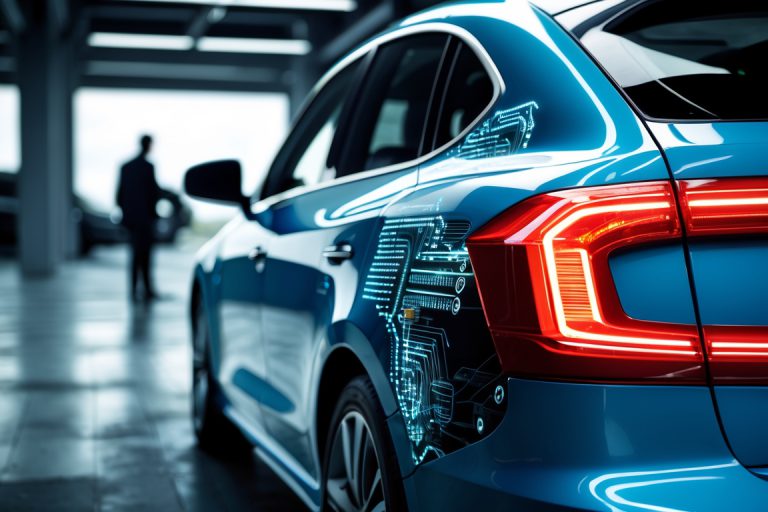In today’s automotive landscape, the phrase “fully loaded” no longer just refers to leather seats and a sunroof. Modern vehicles are equipped with Wi-Fi, GPS tracking, infotainment systems, Bluetooth, and even remote engine start via smartphone apps. While these innovations bring convenience and connectivity, they also introduce a less talked-about risk: car hacking.
With vehicles now more like computers on wheels than machines of the past, cyber vulnerabilities have crept into the driver’s seat. But how real is this threat, and what can drivers do to stay safe? In this article, we’ll examine the risks of hyper-connected cars, real-world hacking incidents, and how you can protect yourself in this new digital driving era.
What is Car Hacking?
Car hacking refers to unauthorized access and control of a vehicle’s electronic systems. This could include everything from taking over steering and braking systems to disabling alarms, unlocking doors, or tracking a vehicle’s location in real-time. While it once sounded like science fiction, several high-profile demonstrations and real-world cases have proven it’s a very real concern.
The root of the problem lies in the rise of electronic control units (ECUs) and the growing number of communication channels—Bluetooth, mobile apps, USB ports, even tire pressure sensors—that hackers can exploit.
Real Incidents That Raised Alarms
One of the most famous examples came in 2015, when security researchers Charlie Miller and Chris Valasek remotely hacked a Jeep Cherokee while it was driving on the highway. Through a vulnerability in the infotainment system, they gained access to the vehicle’s brakes, steering, and engine. The demonstration was so impactful that Fiat Chrysler had to recall 1.4 million vehicles.
Since then, ethical hackers have uncovered vulnerabilities in Teslas, BMWs, and even Toyota vehicles. In some cases, flaws allowed attackers to unlock doors, steal data, or even remotely start the engine. These incidents have forced automakers to treat cybersecurity as seriously as crash safety and emissions.
Why Are Modern Cars Vulnerable?
1. More Software = More Entry Points
A modern car can have up to 100 million lines of code. Each function—navigation, climate control, media, engine management—is governed by software. Every line is a potential vulnerability, especially if systems are poorly integrated or lack proper encryption.
2. Always-On Connectivity
Wi-Fi hotspots, LTE connectivity, and cloud-based diagnostics mean your car is constantly online. While this enables great features, it also opens a path for hackers, especially if software updates or security patches are delayed or neglected.
3. Lack of Cybersecurity Standards
Unlike IT systems, which have long been held to strict security standards, the automotive industry is still catching up. Many systems were originally designed without cybersecurity in mind and only retrofitted with protections after threats emerged.
Who Is at Risk?
Hackers don’t just target cars for the thrill—there are practical motives. Car theft is one. Criminals can clone key fobs or exploit vulnerabilities in door-lock systems to steal vehicles without physical force. Privacy is another concern, as hackers can access location data, synced phone information, or even live microphones.
Corporate fleets are also a target. With dozens or hundreds of vehicles, all running the same software, a single vulnerability can compromise an entire network.
Autonomous and semi-autonomous vehicles, which rely even more on software and connectivity, present an even larger surface for cyberattacks.
How to Protect Yourself
While you can’t patch your car like a phone, there are practical steps every driver can take:
1. Keep Software Updated
If your car offers over-the-air (OTA) updates, enable them and check regularly for new releases. If not, ask your dealer about available updates. Many vulnerabilities are patched quickly—if you stay current.
2. Be Cautious with Aftermarket Devices
Not all third-party accessories are built with security in mind. Think twice before plugging in unknown USB devices or using cheap Bluetooth adapters or remote starters from unfamiliar brands.
3. Limit App Permissions
Only use official apps from your automaker or well-known third-party platforms. Be wary of apps that request excessive permissions or don’t clearly state how they use your data.
4. Use Strong Passwords and Multi-Factor Authentication
If your vehicle is connected to an app or account, treat it like any online service. Use strong, unique passwords and enable multi-factor authentication if available.
5. Disable Unused Features
If you don’t use the Wi-Fi hotspot, remote start, or voice assistant, consider disabling them. Fewer active systems mean fewer potential vulnerabilities.
What Automakers Are Doing
The good news is that the industry is responding. Automakers are hiring cybersecurity teams, conducting penetration testing, and working with ethical hackers to find and fix flaws. Standards like ISO/SAE 21434 are being adopted to ensure cybersecurity is built into vehicles from day one.
Tesla, for example, has a bug bounty program that rewards researchers for discovering vulnerabilities. BMW, GM, and others have joined global information-sharing groups to stay ahead of threats.
Final Thoughts
As cars continue to evolve into high-tech hubs on wheels, their vulnerability to cyberattacks is an issue that can’t be ignored. But just like with smartphones and laptops, awareness is key. By understanding the risks and adopting smart habits, you can enjoy all the benefits of connected driving without unnecessary worry.
Cybersecurity may not be visible like a seatbelt or airbag, but in the connected age, it’s just as essential. The future of driving is digital—let’s make sure it’s secure, too.





